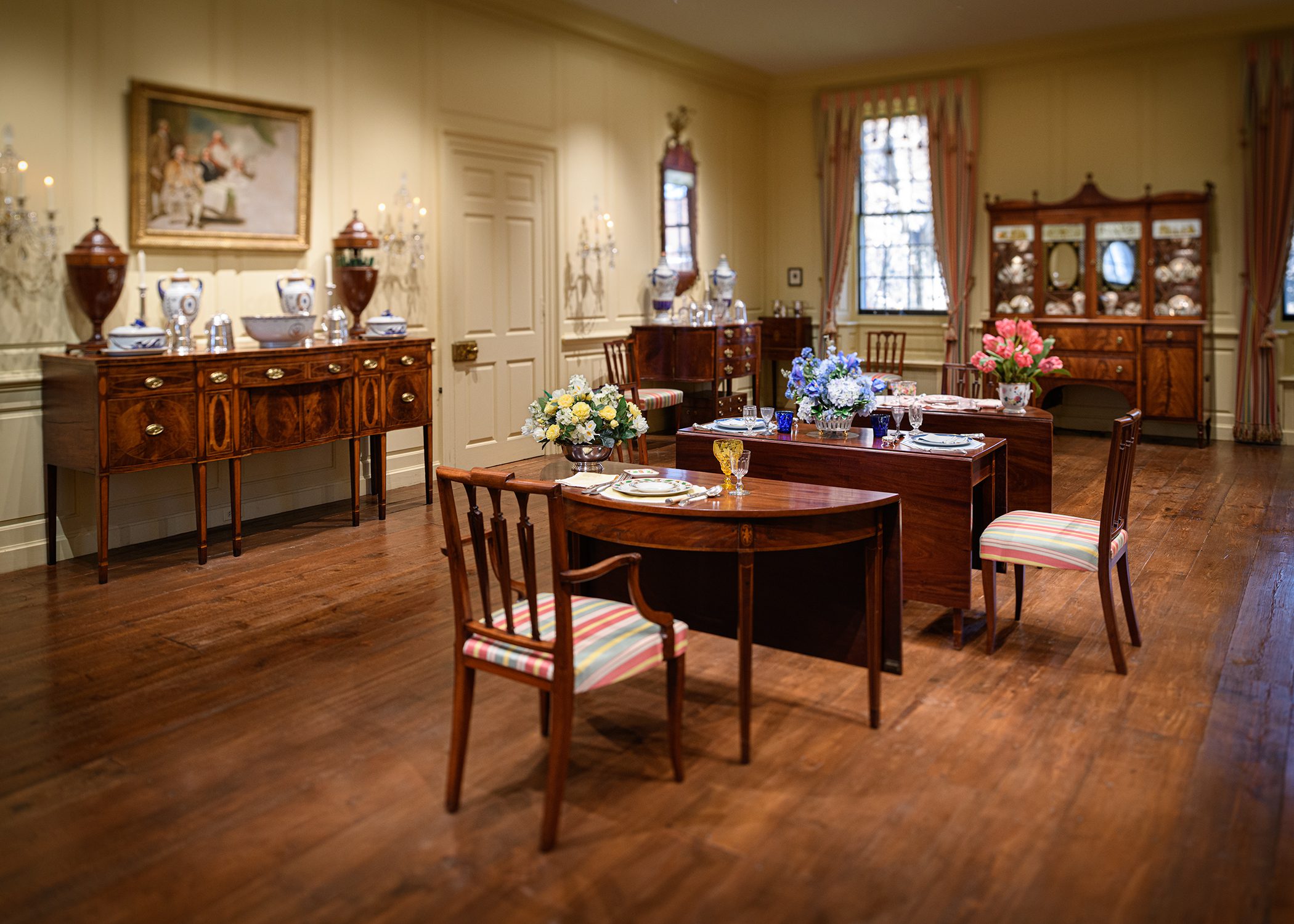
Designing Winterthur, the new self-guided house tour, features sample table settings created by Henry Francis du Pont. He and his wife, Ruth, loved to entertain, and Winterthur provided a perfect setting. Guests would arrive for a weekend of tea on the terrace, golf, swimming, tennis, countless games of bridge, and more.
A highlight of these weekends was the spectacular dinner parties. The Du Pont Dining Room was the stage on which du Pont created elegant meals for his guests. The tablescapes began with the centerpiece, which usually included fresh flowers from the garden and greenhouses. These blooms provided the cue for the dishes that were selected for the table, chosen from among the 58 sets of china du Pont had available for use.
In Henry F. du Pont and Winterthur: A Daughter’s Portrait (1999), Ruth du Pont Lord wrote about how her father entertained:
Although my mother—and of course the head cook—also participated in the planning of meals, my father alone was in charge of the dining room, and he approached it as if he were designing a stage set. His materials—flowers, china, linen—were assembled days in advance, the availability of flowers determining the other choices. Three or four days before a house party a gardener would bring him samples of outdoor or greenhouse flowers that could be counted on to be blooming that weekend. (A flower to be used on the table was not to be seen “anywhere else in the house that day.”) In the huge china closet, whose shelves were loaded with stacks of dishes, a footman would climb a ladder and perilously hand down several centerpieces and matching plates. My father and the butler would then decide on the combination of china, glass, and linen that would best complement the flowers. My down-to-earth mother teased her husband a bit about his painstaking methods, but she was proud of him and happy to be relieved of many duties generally assumed by the lady of the house…Guests were not permitted to see the room before 8:30, when—with the butler’s announcement of dinner—the curtain went up.
Although most of the food—beef, lamb, pork, chicken, turkey, guinea, duck, vegetables, fruit, and dairy products—was from Winterthur’s farms, it wasn’t served down-home style. The meal was served in separate courses, starting with soup. Lunch and dinner were à la russe, or Russian service, with a uniformed footman behind every other chair who would pour the wine and hold the platters and tureens from which dinner guests served themselves.